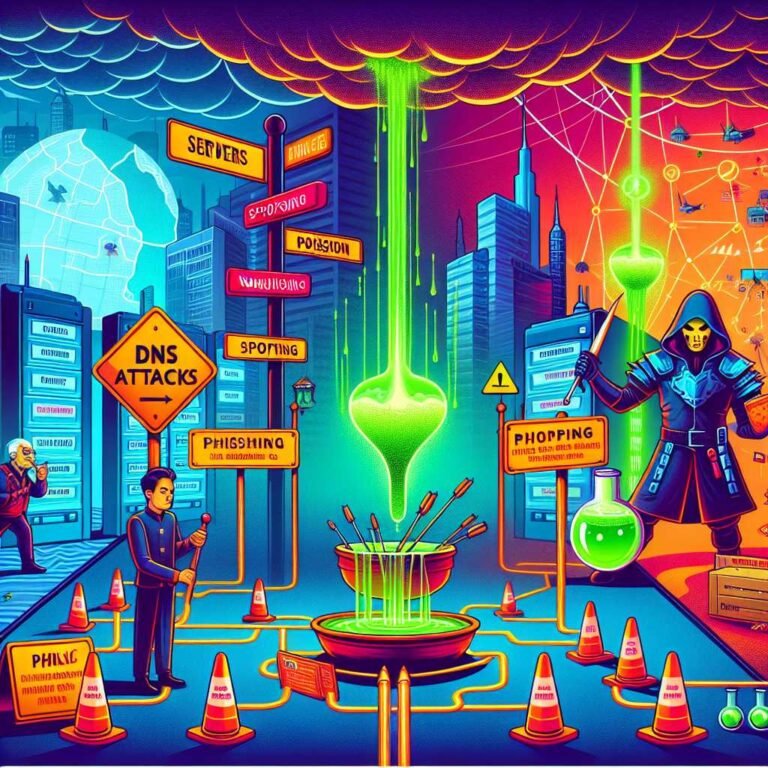FBI Seizes $2.4 Million in Cryptocurrency from Chaos Ransomware Gang: What It Means for Cybersecurity and Crypto Holders
The world of cybercrime just got a jolt—one that’s sending ripples through both the digital underworld and the cryptocurrency community. In a dramatic move, the FBI has seized over $2.4 million worth of Bitcoin from the notorious Chaos ransomware gang. With ransomware attacks on the rise and digital currencies at the center of these crimes, this high-profile seizure—and the subsequent government move to forfeit the funds—carries big implications for businesses, crypto investors, and anyone concerned about the safety of their digital assets.
But what exactly happened? Why does this case matter? And what can the rest of us learn from a story that’s as much about safeguarding the future of money as it is about fighting cybercrime? Let’s break it all down.
The Chaos Ransomware Gang: Who Are They and Why Should You Care?
If you follow cybersecurity news (or, honestly, just the headlines), you’ve probably noticed a surge in ransomware attacks. In simple terms, ransomware gangs use malicious software to lock up a victim’s data, then demand payment—usually in cryptocurrency—in exchange for restoring access.
The Chaos ransomware gang isn’t just another name in the crowd. According to the FBI’s Dallas office, Chaos is believed to have emerged from the remnants of the notorious BlackSuit/Royal gang, a group tied to a series of high-profile attacks across a spectrum of industries.
Key facts about Chaos: – Origins: Offshoot of BlackSuit/Royal, known for sophisticated operations. – Targets: Wide range, from healthcare to finance and government. – Modus operandi: Encryption-based extortion, demanding Bitcoin or other cryptocurrencies. – Recent activity: A Cisco Talos report revealed a flurry of intrusions attributed to Chaos in 2025.
Here’s why that matters: each successful ransomware attack not only costs victims millions in ransom and downtime—it also threatens broader economic stability and public trust in digital systems.
Inside the FBI’s $2.4 Million Crypto Seizure
Let’s get to the news that sparked global headlines.
On April 15, 2025, the FBI Dallas field office seized 20.2 Bitcoin from a cryptocurrency address linked to a member of the Chaos gang. At the time of the seizure, the stash was worth approximately $1.7 million. Thanks to Bitcoin’s notorious volatility and subsequent price surges, the value had ballooned to over $2.4 million when the seizure was publicly announced on July 28, 2025.
But this isn’t just about the dollars (or, rather, the digital tokens). The FBI’s ability to track, seize, and now move to forfeit these assets is a major statement: cybercriminals aren’t as anonymous or untouchable as they once thought.
How Did the FBI Track the Crypto?
Cryptocurrency is lauded for its “pseudonymity”—but that doesn’t mean transactions are invisible. Every Bitcoin transfer is permanently recorded on the blockchain, creating a digital trail. Investigators used this to: – Follow the money: Tracing ransom payments through addresses associated with Chaos. – Identify suspects: Linking wallet addresses to real-world identities via exchanges or slip-ups. – Seize assets: Legally freezing and confiscating funds tied to criminal activity.
It’s a cat-and-mouse game, but the FBI’s success here demonstrates how advanced forensic techniques and international cooperation are closing the net on digital extortionists.
What Happens Next? The Forfeiture Battle Explained
Seizing crypto is one thing; keeping it is another.
On July 28, 2025, the U.S. Department of Justice (DoJ) filed a civil complaint in the Northern District of Texas seeking the forfeiture of the seized Bitcoin. As detailed in their press release, the government argues that the Bitcoin constitutes property “involved in unlawful activity”—specifically, money laundering and extortion related to ransomware.
But here’s the catch:
Forfeiture isn’t automatic. The government must prove in court that the crypto is indeed tied to criminal conduct. This ensures due process and gives anyone with a legitimate claim a chance to contest the seizure.
Why Is Civil Forfeiture Important?
- Deterrence: It signals to criminals that illicit gains are not safe, even if hidden in digital wallets.
- Restitution: Seized assets can sometimes be used to repay victims.
- Strategic reserves: As we’ll discuss below, some seized assets are now being preserved for national interests.
Ransomware, Crypto, and the New Digital Arms Race
You might wonder: why do ransomware gangs love cryptocurrency so much? In a word—anonymity. Digital currencies let attackers receive payments without providing a name, bank account, or address.
But the flip side is just as important: blockchain transparency. Every transaction is public and permanent, which law enforcement can—and increasingly does—leverage to trace funds.
Let me explain with an analogy:
Imagine a thief who only moves stolen goods via well-lit, security camera–monitored highways. While it’s harder to catch them live, every move leaves behind clues. Given time and the right tools, investigators can reconstruct the entire journey.
Recent ransomware trends: – Growing sophistication: Gangs use “mixers,” privacy coins, and multiple wallets to obscure flows. – Global reach: Attacks can come from anywhere, targeting victims worldwide. – Escalating demands: Payments in crypto make it easy to demand millions—instantly and without borders.
The Strategic Bitcoin Reserve: A New Era in Digital Asset Policy
Here’s where things get even more interesting.
In March 2025, President Donald Trump signed an Executive Order establishing the Strategic Bitcoin Reserve—a first-of-its-kind move for any country. This U.S. Digital Asset Stockpile, funded by forfeited Bitcoin held by the Department of Treasury, represents a new approach to managing seized digital assets.
What does this mean for you and for the future of crypto?
- Preservation, not liquidation: Instead of immediately selling all seized assets, the government now retains a portion—potentially to hedge against future needs or to influence broader market stability.
- Operational funding: Assets are only liquidated when necessary for operational funding or to provide restitution to victims.
- Policy precedent: The U.S. is signaling that digital assets are now strategic resources—akin to gold or oil in past decades.
For more on the intersection of government and digital assets, see CoinDesk’s reporting on the policy shift.
Why the Chaos Case Is a Watershed Moment for Law Enforcement and Crypto
This story isn’t just about one gang or a pile of seized Bitcoin—it’s a landmark in the global fight against ransomware and a sign of things to come for cryptocurrency regulation.
Key takeaways: – Law enforcement is catching up: Advanced blockchain analytics and cooperation are making it harder for criminals to hide behind crypto. – Seizure and forfeiture work: Public, high-value cases like this may deter future attacks and help compensate victims. – Policy is evolving: With moves like the Strategic Bitcoin Reserve, governments are treating digital assets as serious, strategic holdings.
And here’s why that matters—every step forward in tracing, seizing, and managing criminal crypto not only protects today’s victims but shapes the future of digital finance for everyone.
What Does This Mean for Businesses, Investors, and Ordinary Crypto Holders?
If you’re running a business, investing in crypto, or even just holding the occasional Bitcoin, you might be wondering: should I be worried?
The good news:
Law enforcement isn’t coming after honest users or legitimate investors. These actions target assets clearly linked to criminal conduct, with processes in place to ensure fairness.
However, there are still takeaways for everyone:
If You’re a Business
- Harden your cybersecurity: Ransomware is a risk for companies of all sizes. Regularly update software, train staff, and have backups.
- Have a response plan: Know what to do if attacked, including legal and technical steps.
- Consider cyber insurance: Some policies now cover ransomware-related losses.
If You’re a Crypto Investor
- Keep records: Maintain transaction histories for tax and compliance purposes.
- Know your sources: Be wary of accepting or purchasing coins from unknown or suspicious parties.
- Secure your wallets: Use hardware wallets and strong passwords to prevent theft.
If You’re a Victim of Ransomware
- Report immediately: Contact law enforcement. Agencies like the FBI have resources for ransomware victims.
- Don’t pay if you can avoid it: There’s no guarantee you’ll get your data back, and payments fund further attacks.
Challenges Ahead: Can Law Enforcement Keep Up with Cybercriminals?
While this case is a win, the fight is far from over.
Challenges remain: – Privacy tools: Mixers and privacy coins make tracking harder. – International scope: Many attackers operate from countries with limited cooperation. – Resource gaps: Not all agencies have the same technical know-how or funding.
But the direction is clear: with every high-profile win, the tools and tactics for fighting crypto-enabled crime get stronger and more sophisticated.
FAQs: People Also Ask
How did the FBI seize cryptocurrency from the Chaos ransomware gang?
The FBI used blockchain analysis to trace Bitcoin ransom payments to wallet addresses linked to Chaos. Once the addresses were identified and tied to criminal conduct, the FBI obtained legal authority to seize the assets.
What is civil asset forfeiture in the context of cryptocurrency?
Civil asset forfeiture allows the government to seize assets—like cryptocurrency—suspected of being tied to crime, even if no criminal conviction has yet occurred. The government must prove the link in court, and affected parties can contest the seizure.
What is the Strategic Bitcoin Reserve?
Established by executive order in March 2025, the Strategic Bitcoin Reserve is a U.S. Treasury–managed stockpile of Bitcoin forfeited through criminal or civil asset seizures. It represents a shift toward treating digital assets as strategic holdings.
Is my cryptocurrency at risk of government seizure?
If your assets are obtained and used legally, there’s little risk. The government targets funds clearly tied to criminal activity. Always keep records and use reputable exchanges.
How can businesses protect themselves from ransomware?
Best practices include regular software updates, employee training, robust backups, and having a clear incident response plan. CISA offers guidance for prevention and response.
Where can victims report ransomware attacks?
Victims in the U.S. can report ransomware incidents to the FBI via the Internet Crime Complaint Center (IC3).
Key Takeaway: The Crypto Crime Crackdown Is Here—Stay Vigilant
The FBI’s seizure of $2.4 million from the Chaos ransomware gang is more than a victory for law enforcement—it’s a turning point in the ongoing battle between cybercriminals and those determined to stop them. For everyone who relies on digital systems or holds crypto assets, the message is clear: the rules of engagement are changing fast.
Stay informed, take proactive cybersecurity measures, and remember—transparency, both in your finances and your security practices, is your best ally.
Want to stay ahead of the curve on crypto, cybersecurity, and digital policy? Subscribe for more expert insights and breaking news. Your digital future depends on it.
Discover more at InnoVirtuoso.com
I would love some feedback on my writing so if you have any, please don’t hesitate to leave a comment around here or in any platforms that is convenient for you.
For more on tech and other topics, explore InnoVirtuoso.com anytime. Subscribe to my newsletter and join our growing community—we’ll create something magical together. I promise, it’ll never be boring!
Stay updated with the latest news—subscribe to our newsletter today!
Thank you all—wishing you an amazing day ahead!
Read more related Articles at InnoVirtuoso
- How to Completely Turn Off Google AI on Your Android Phone
- The Best AI Jokes of the Month: February Edition
- Introducing SpoofDPI: Bypassing Deep Packet Inspection
- Getting Started with shadps4: Your Guide to the PlayStation 4 Emulator
- Sophos Pricing in 2025: A Guide to Intercept X Endpoint Protection
- The Essential Requirements for Augmented Reality: A Comprehensive Guide
- Harvard: A Legacy of Achievements and a Path Towards the Future
- Unlocking the Secrets of Prompt Engineering: 5 Must-Read Books That Will Revolutionize You







